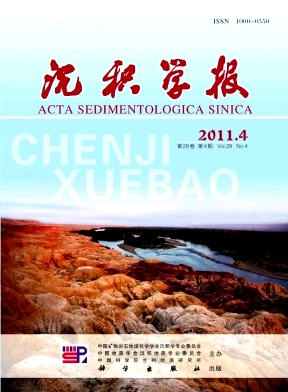The Sedimentary and Foreground of Prospect for LeveeOverbank in Central Canyon, Qiongdongnan Basin
- Received Date: 1900-01-01
- Rev Recd Date: 1900-01-01
- Publish Date: 2011-08-10
-
Key words:
- leveeoverbank /
- ancient physiognomy /
- Qiongdongnan Basin /
- central canyon
Abstract: In our country as the lower frequency of land and shallow water exploration for oil and gas, deep water oil and gas exploration is playing more important role. Big reservoir body becomes the target of deepwater oil and gas exploration, because the deepwater oil and gas exploration has some characteristics, such as greater risks and higher investment. Central canyon, which comes from Yinggehai basin and pass through Qiongdongnan basin and enter into the xisha trough, lies in the deepwater area of Qiongdongnan basin and is mainly formed at 10.5 Ma, 5.5 Ma and 4.2 Ma. With an area of more than 50 000 km2, central canyon can be a target of deepwater oil and gas exploration.
In the central canyon, leveeoverbank sediments are abundant. Deepwater leveeoverbank has received considerable attention in the petroleum industry because of having good reservoirs. In order to conduct the prospect for central canyon, this article has analyzed the shape and control factors of leveeoverbank deposited in the central canyon by using 3D seismic profile and RMS attribute. After that, the sediment model is summed up and the foreground of prospect is analyzed. The result has shown below:
1. leveeoverbank sediments in the central canyon developed at least eight times, and have many micro facies such as crevasse splay, overflow splay and levee. In the cross seismic profiles, leveeoverbank sediments represent wedge shape with strong amplitude, intermediate frequency and midgood continuity, and combining with channel has shown "gullwing" shape. In the plane, the overall shape of leveeoverbank sediments is elongate and trends roughly parallel to the channel. Its area of single sand body could reach 17 km2.
2. In the central canyon, leveeoverbank sediments is mainly controlled by province and ancient physiognomy. The grain size whether sandrich or mudrich is mainly decided by province. The position is mainly decided by ancient physiognomy. The pond accommodate space is afforded for leveeoverbank to be deposited in the area where has fluctuation variation. On the opposite, in the incline area, there is no accommodation and leveeoverbank cannot deposit.
3. Leveeoverbank sediments which has many deposition time and large single sand body can be ideal stratigraphic traps and it could accumulate oil and gas if it cooperate with fault or "gas chimney". Leveeoverbank sediments have well foreground for prospect.
| Citation: | LI Dong. The Sedimentary and Foreground of Prospect for LeveeOverbank in Central Canyon, Qiongdongnan Basin[J]. Acta Sedimentologica Sinica, 2011, 29(4): 689-694. |






 DownLoad:
DownLoad: